A Tour of the USA Pavilion at Expo 2020 in Photos
2 Comments
The previous entry took you on a quick tour of Expo 2020. This one concentrates on a particular building, the USA pavilion, showing you all of its public spaces. Most Expo pavilions are ephemeral, so my hope is that this series of photographs will help memorialize the USA Pavilion at Expo 2020 Dubai. The construction was going to be done in six months, but the postponement due to the pandemic afforded a welcome additional year. Although the final cost has not been published, it has been reported that the UAE contributed $60 million.
With a large number of pavilions present, the visitor’s attention span is necessarily short. I spent many hours photographing the pavilion, but prior to that, to appreciate the quality of the experience, I did a quick walkthrough at the pace of a regular visitor, which took less than half an hour. I found the exhibits cohesive, enjoyable, educational, and effective at conveying the theme of world-changing innovation thriving in an environment enabled by freedom.
Entrance
The pavilion’s facade is covered by an overhanging roof screen for shade during hot days. It is decorated with interlocking metal stars that evoke the American flag and form a leitmotif through the pavilion. At night, the space between the stars and the wall makes possible a light show with colors shifting from white, red, and blue to create dynamic patterns. Past the pavilion’s motto “Life, Liberty, and the Pursuit of the Future” and a welcome video featuring Vice-President Harris, visitors step onto the “travellator”, a people mover similar to those found at airports winding around the first three exhibits. That approach provides a perfect flow, as the exhibits are perfectly synchronized with the pace of motion.
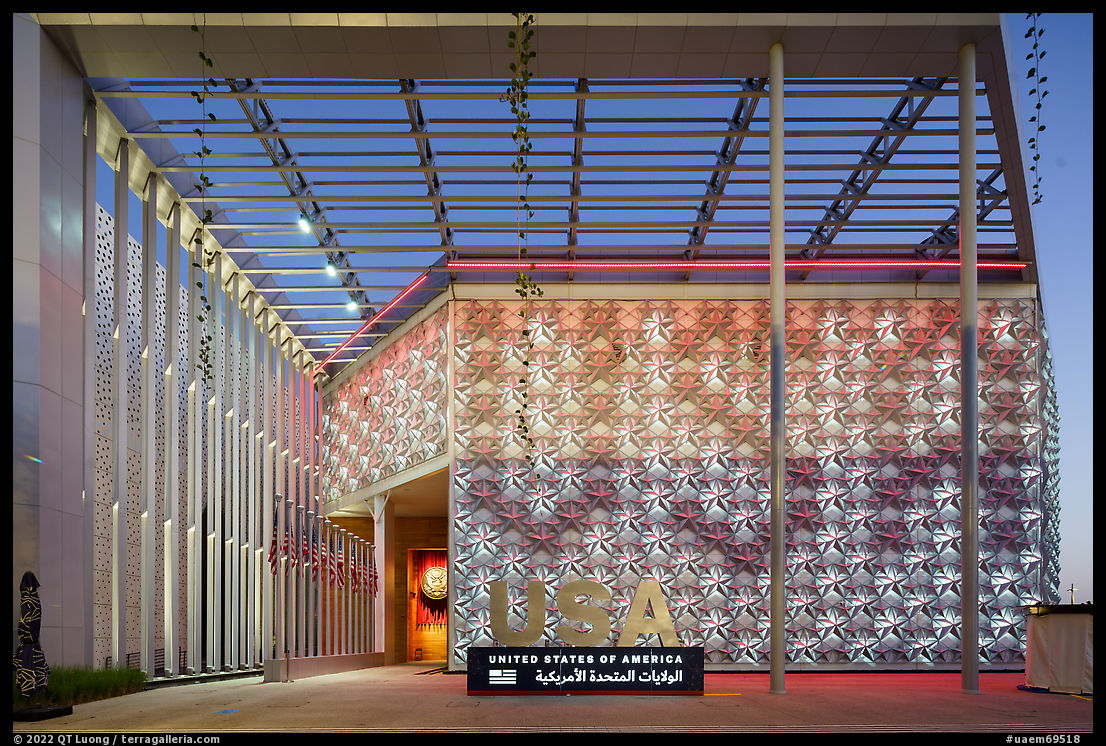
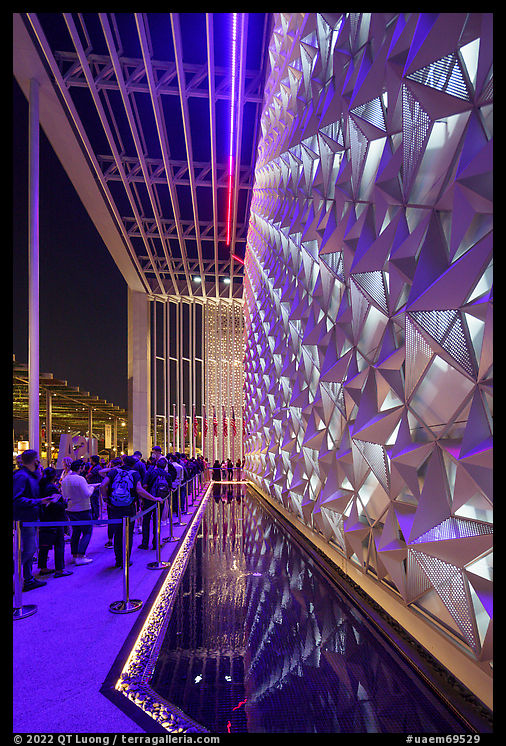
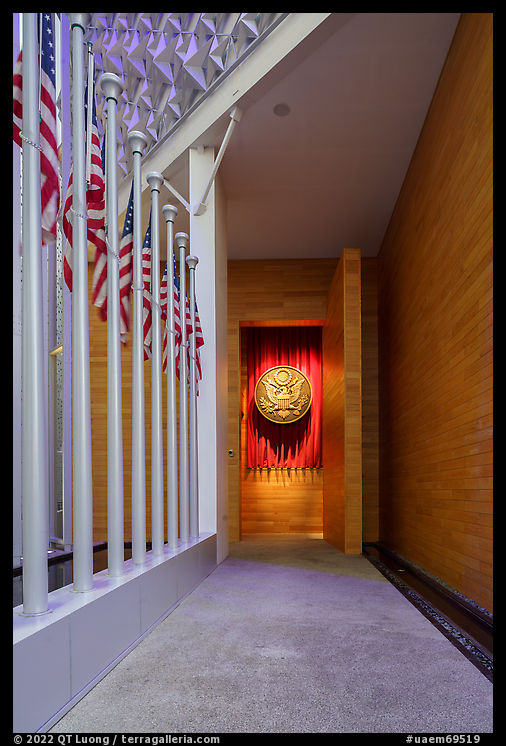
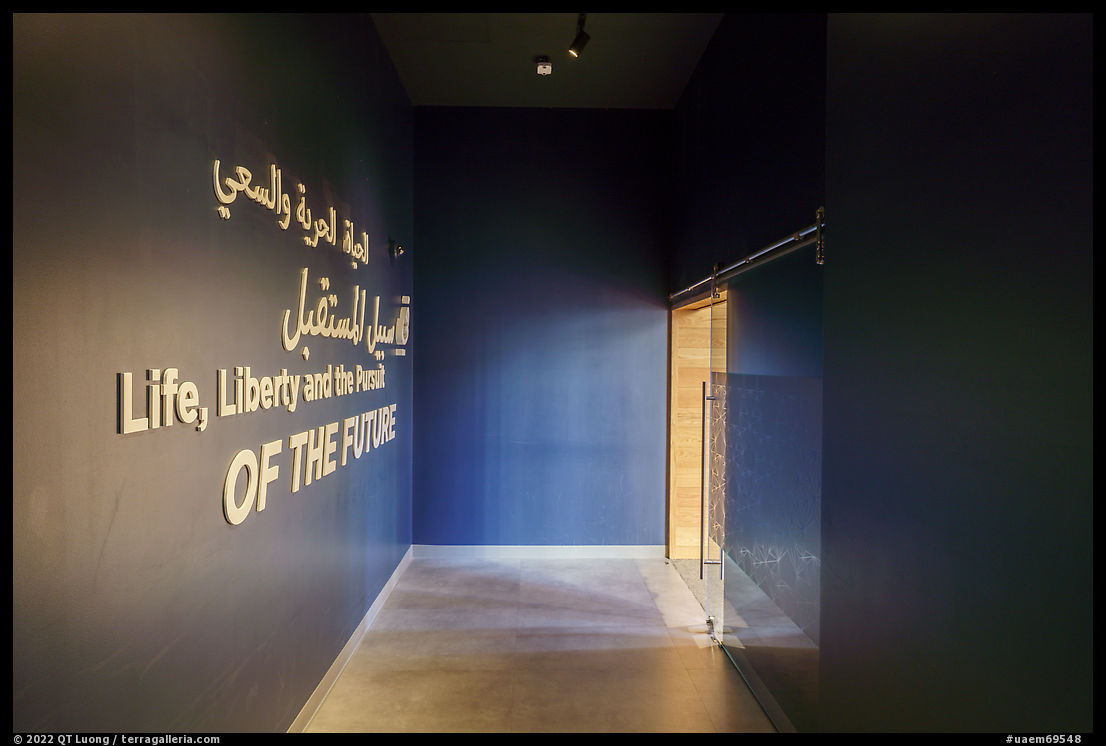
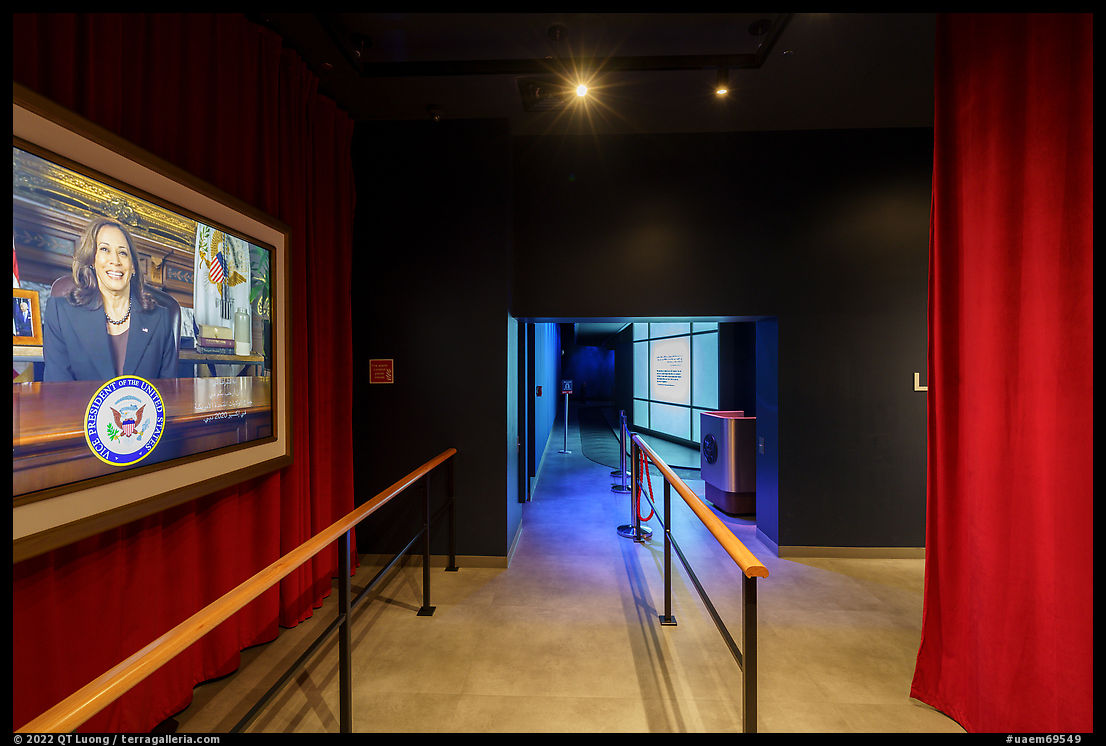
Exhibit 1: Foundations of Freedom
Following a quote from the Declaration of Independence, a model of the Statue of Liberty’s torch is surrounded by a media show that recounts from sunrise to sunset America’s history with iconic images: pioneer settlements, Liberty Bell, Lincoln Memorial, NYC skyline. The key is a quote from Benjamin Franklin linking freedom and innovation. Past the show, a copy of the Quran belonging to Thomas Jefferson, displayed abroad for the first time, is a reminder of religious freedom values.
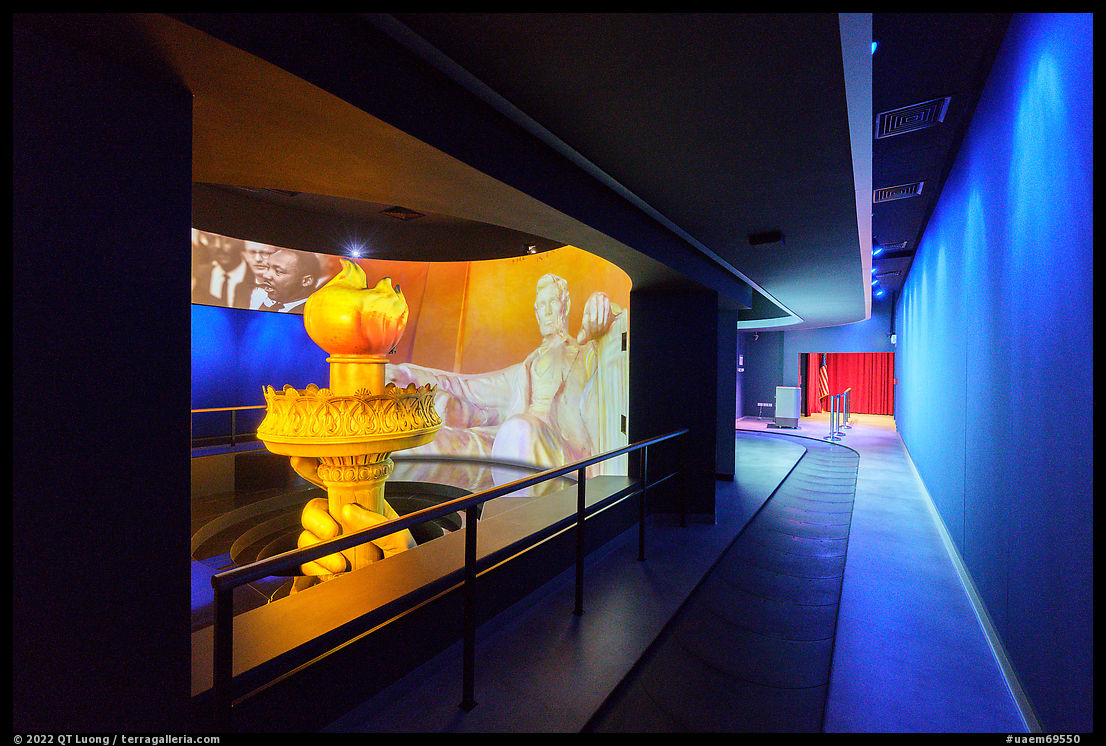
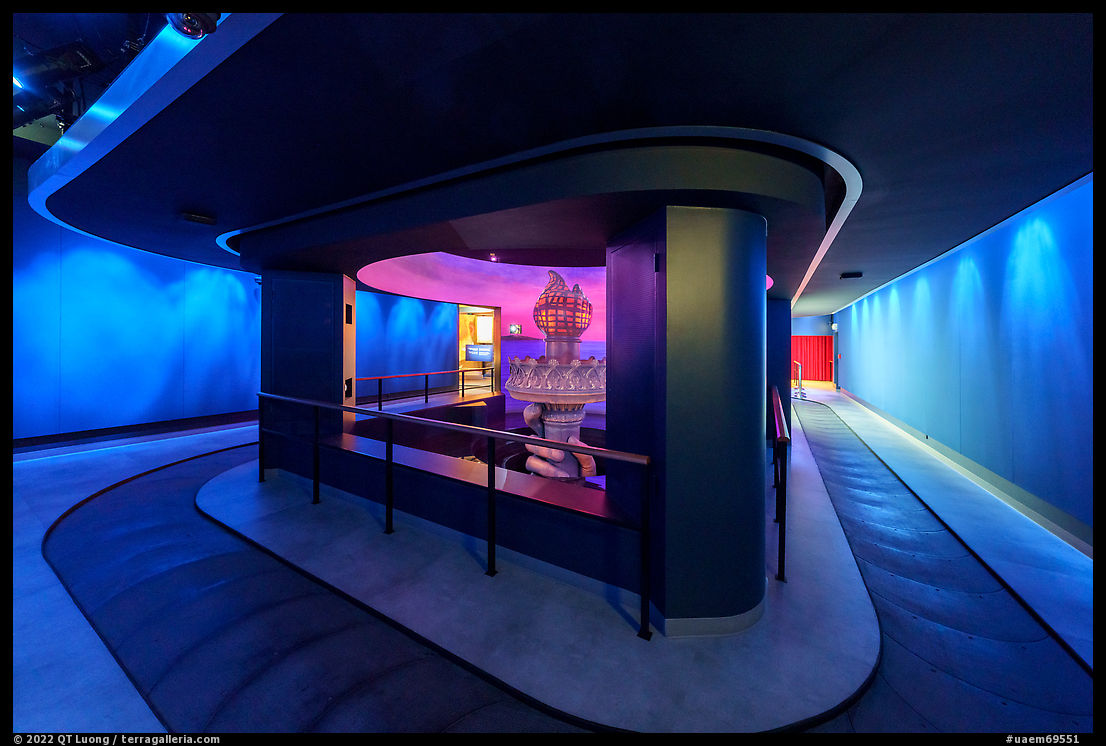
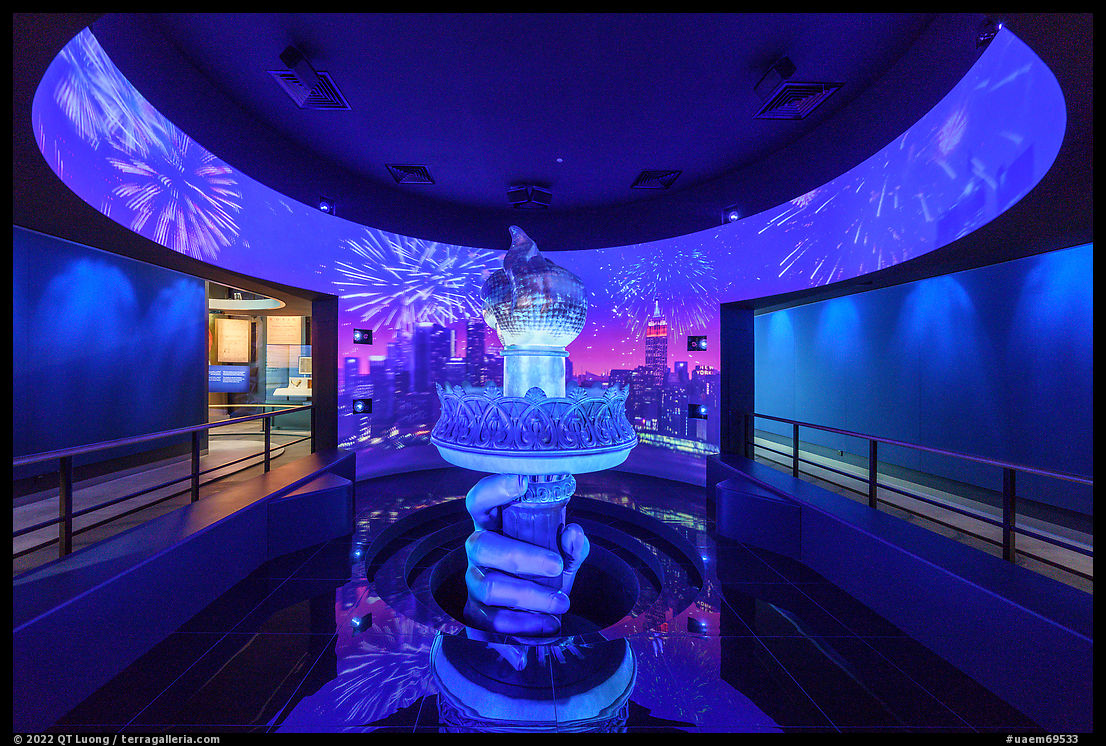
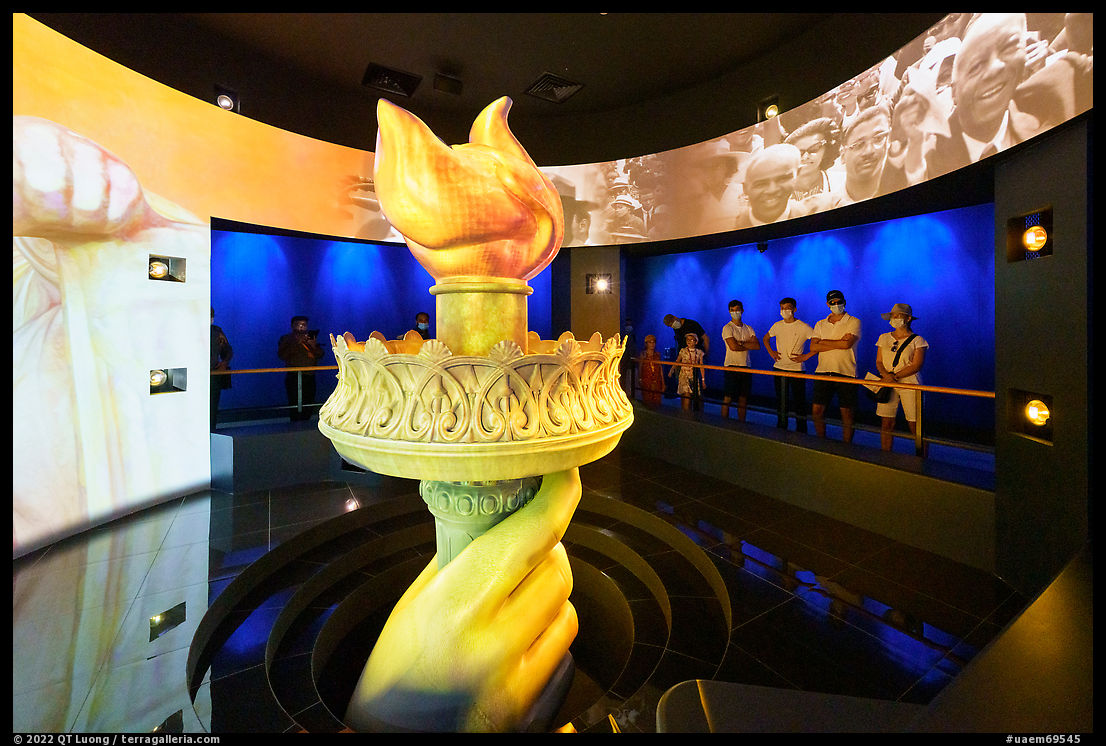
Exhibit 2: American Innovation
Bookended by one of Alexander Graham Bell’s first telephone prototypes and by Steve Jobs’s first iPhone, a long curved wall made of stars is the stage for projected media showcasing iconic American inventions: the lightbulb, phone, automobile industry, airline industry, the internet, space travel.
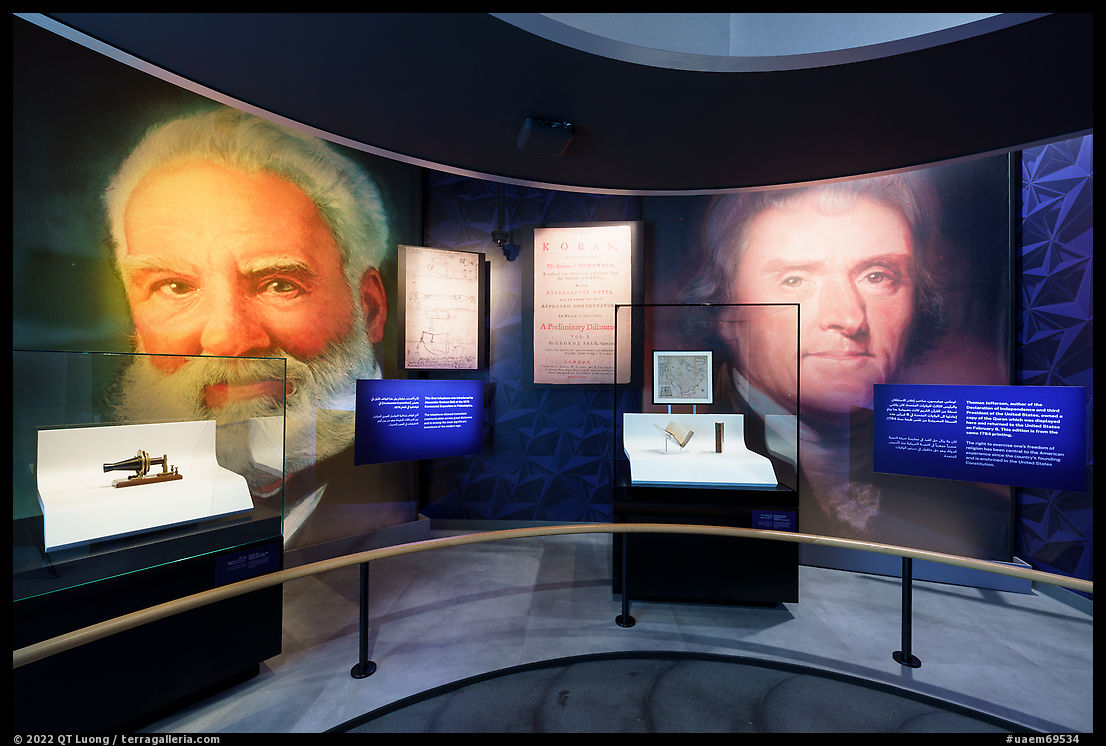
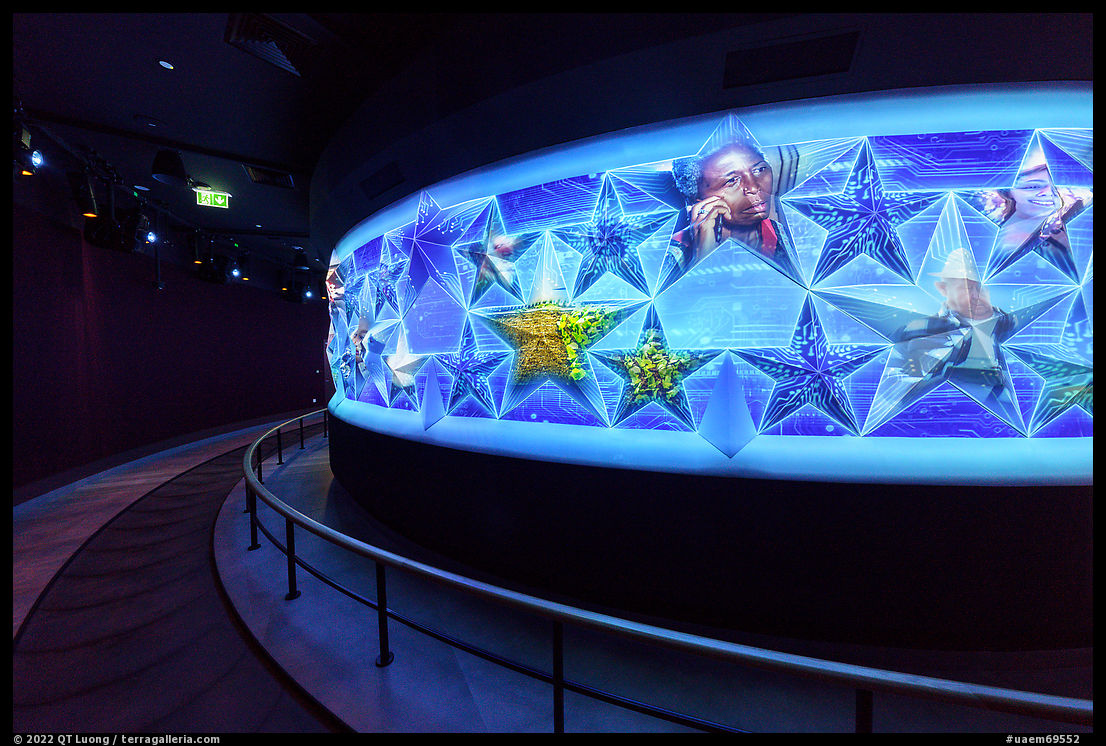
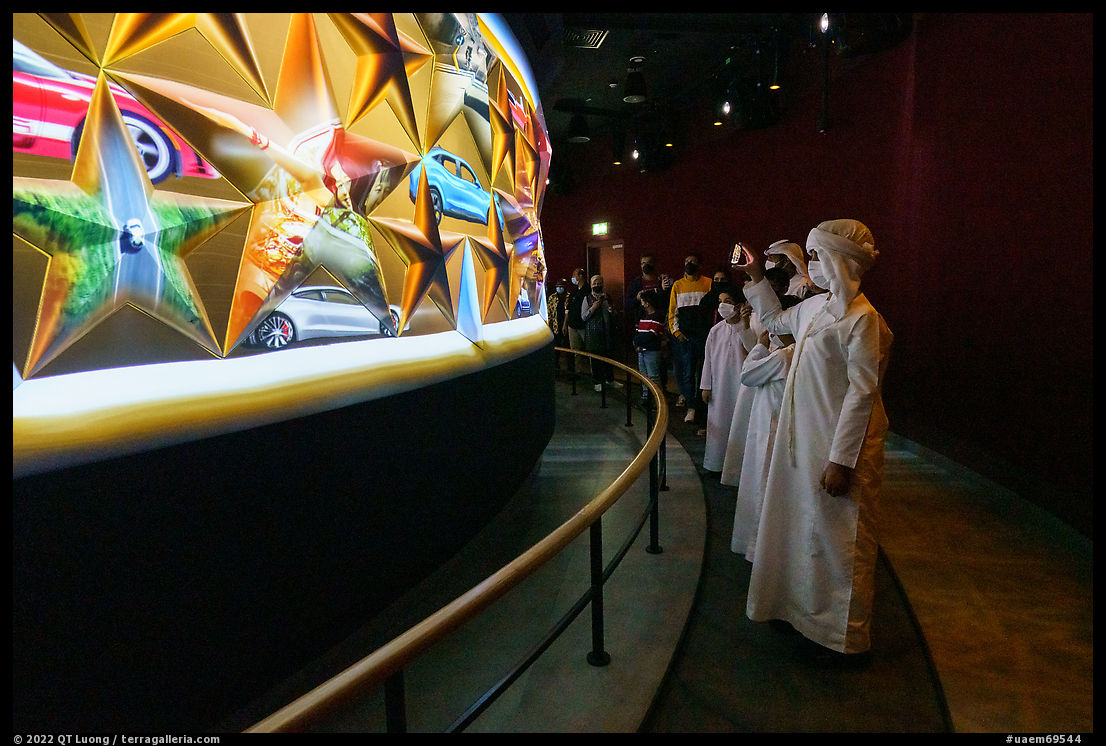
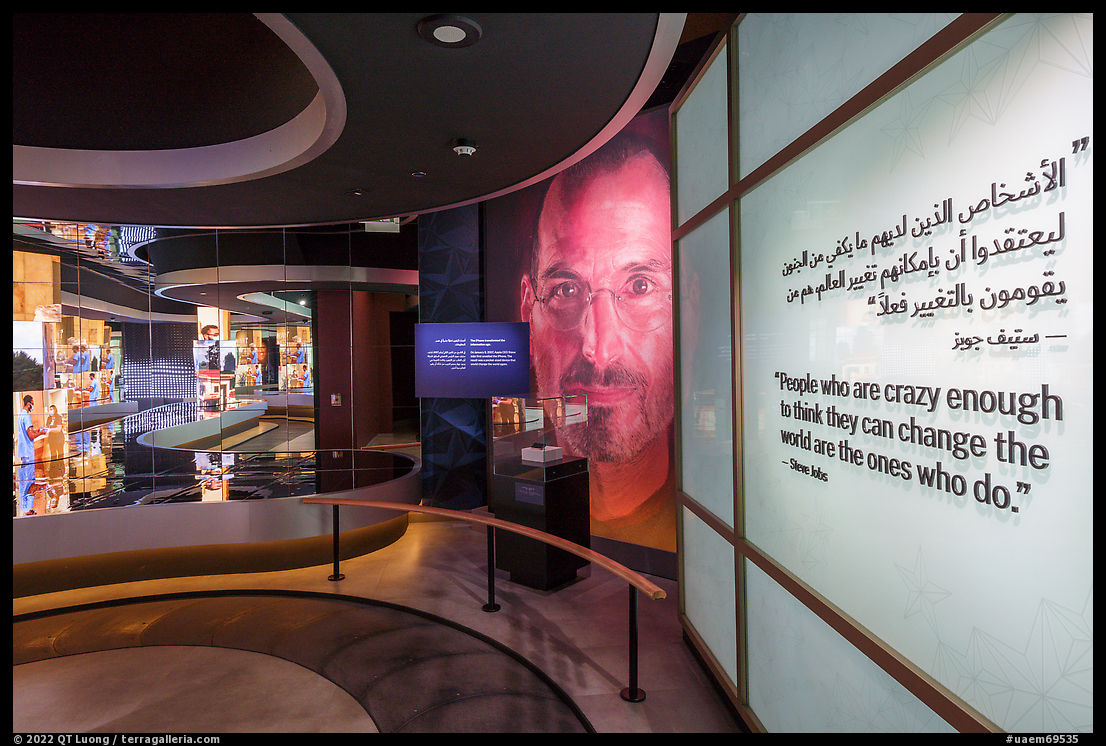
Exhibit 3: The Innovation Generation
Displayed in a dazzling array of rotating cubes surrounded by mirrors, media points the visitor to a new generation of innovators, young and diverse people whose start-up companies are starting to make an impact on our lives.
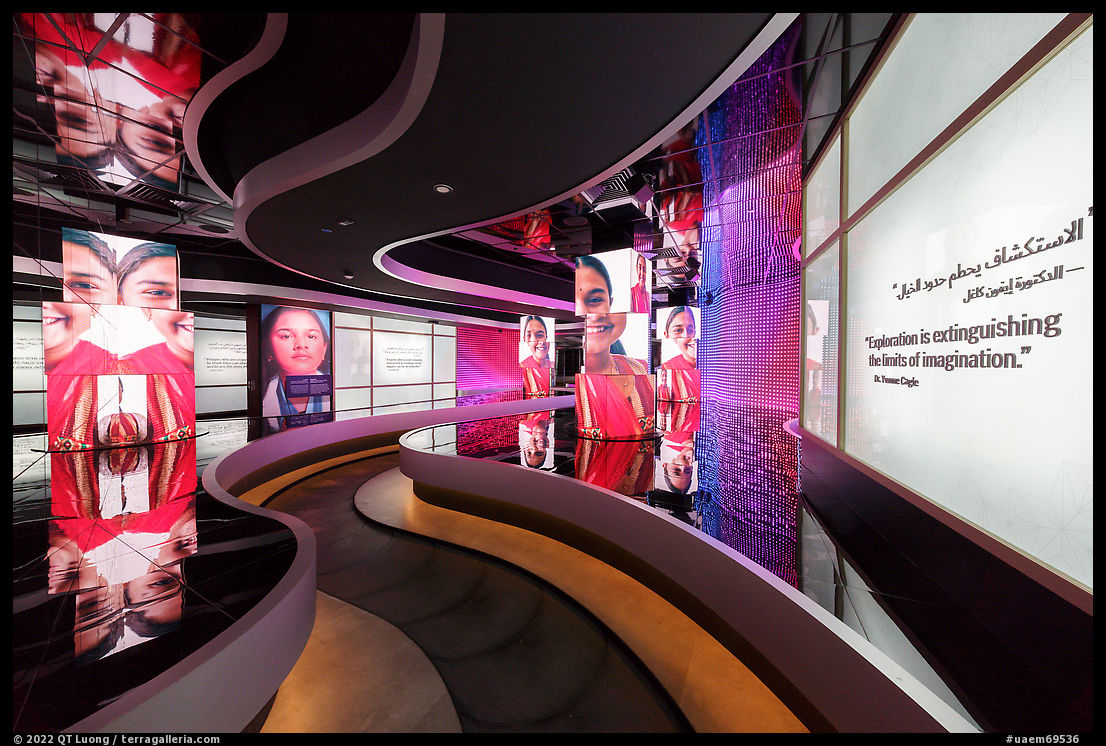
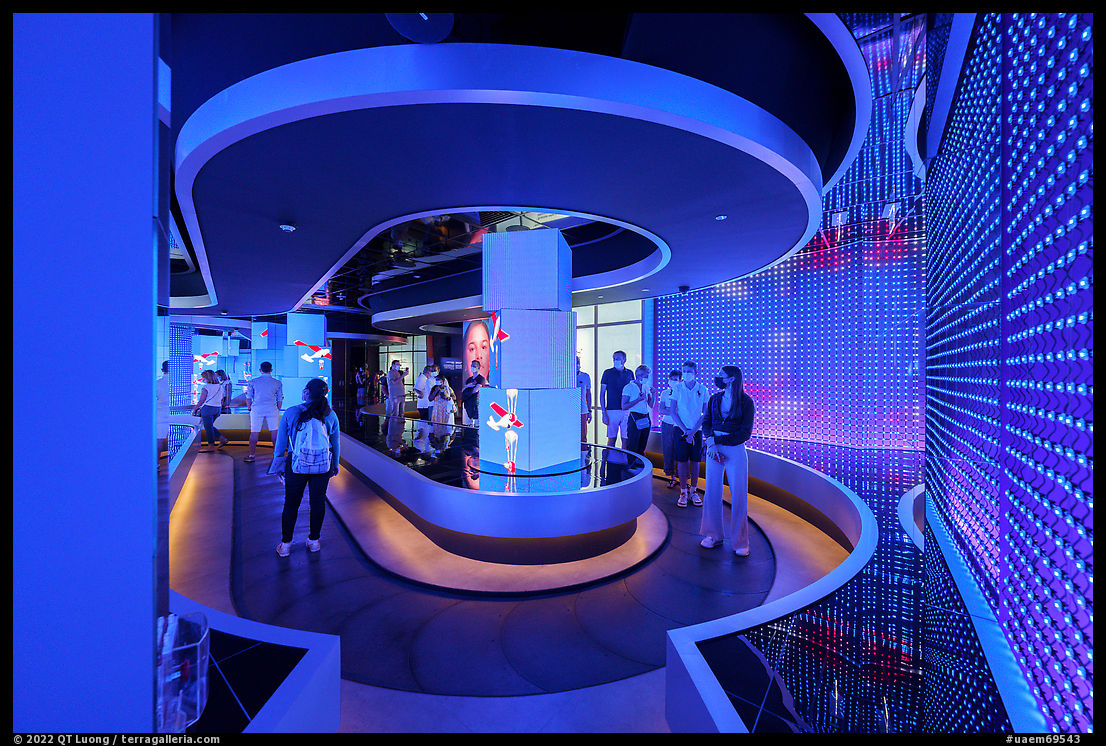
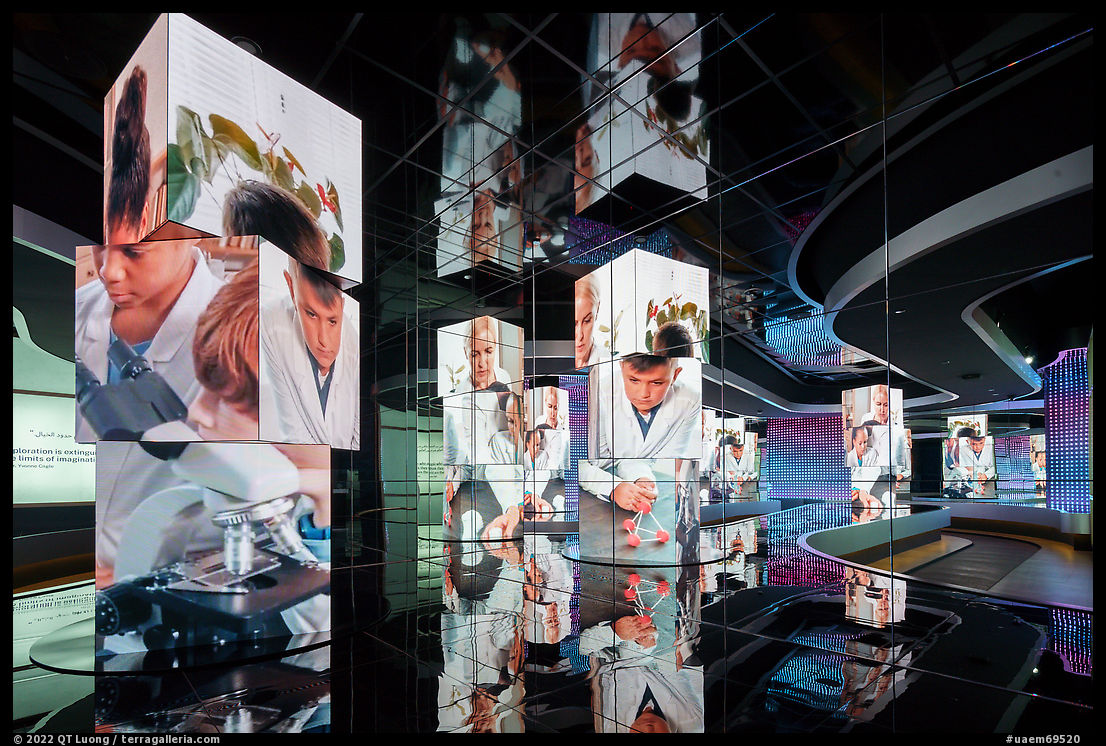
Exhibit 4: The Sky Is No Longer the Limit
Visitors disembark the moving walkway and stare at the ceiling where an 8-minute booming horizontal theater show takes place. Moving objects, most notably a massive sphere, are animated by mapped media projection. Featured are big technological ideas of the future: quantum computing, nuclear fusion, space exploration.
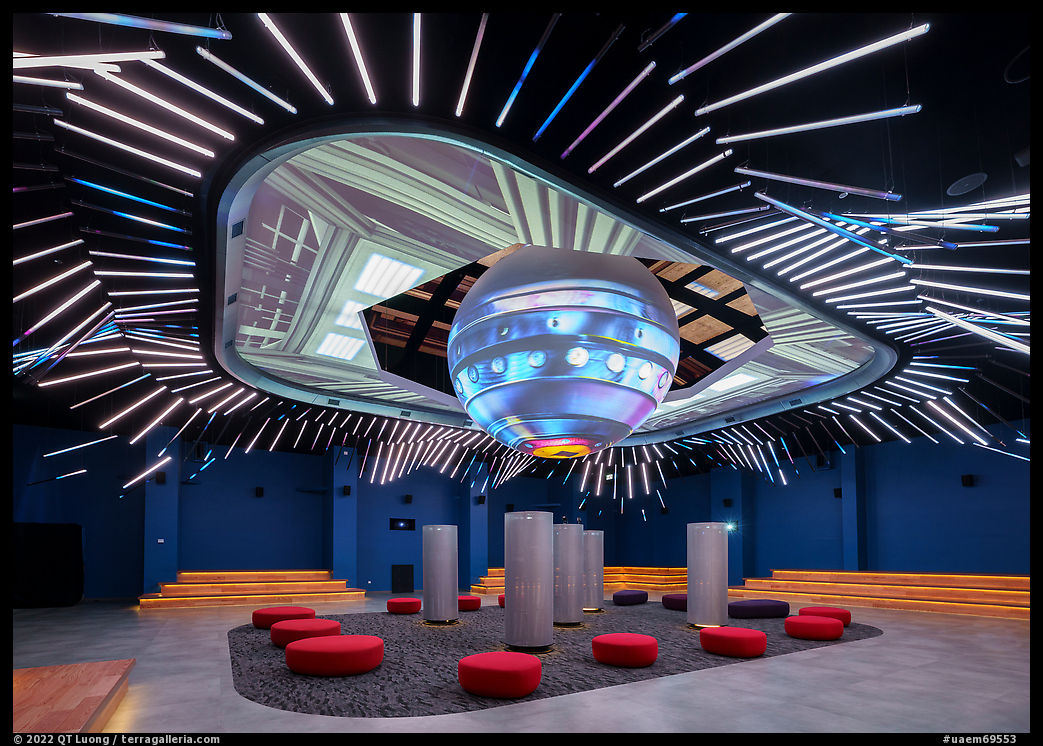
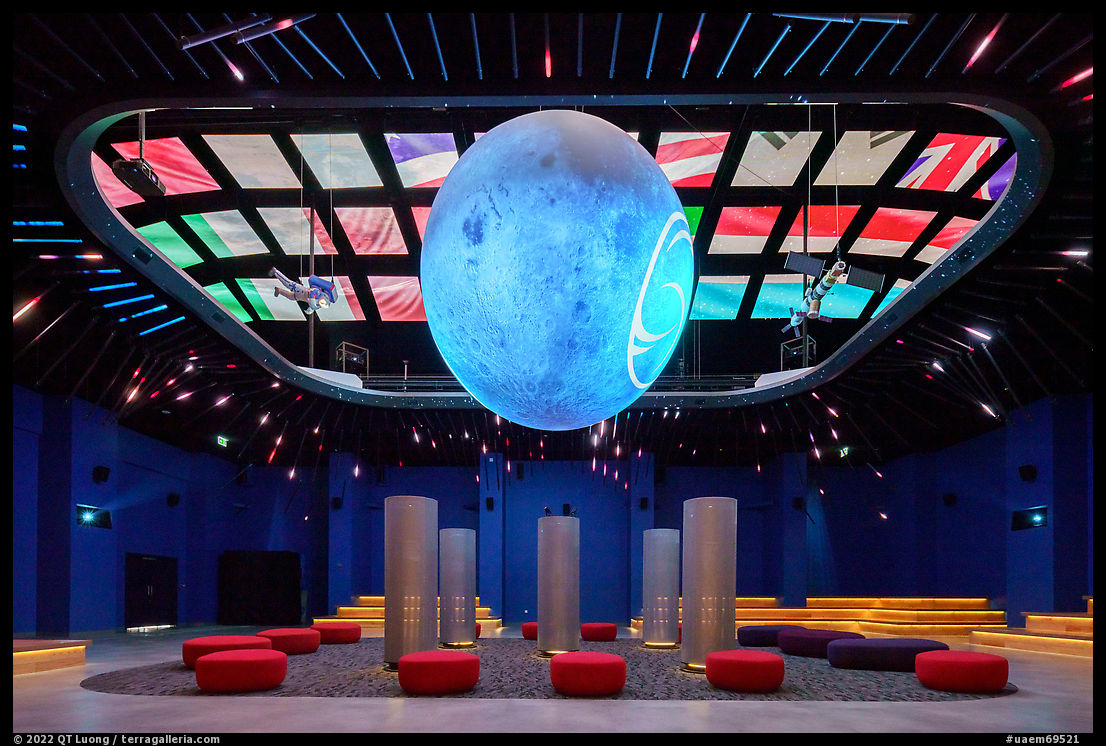
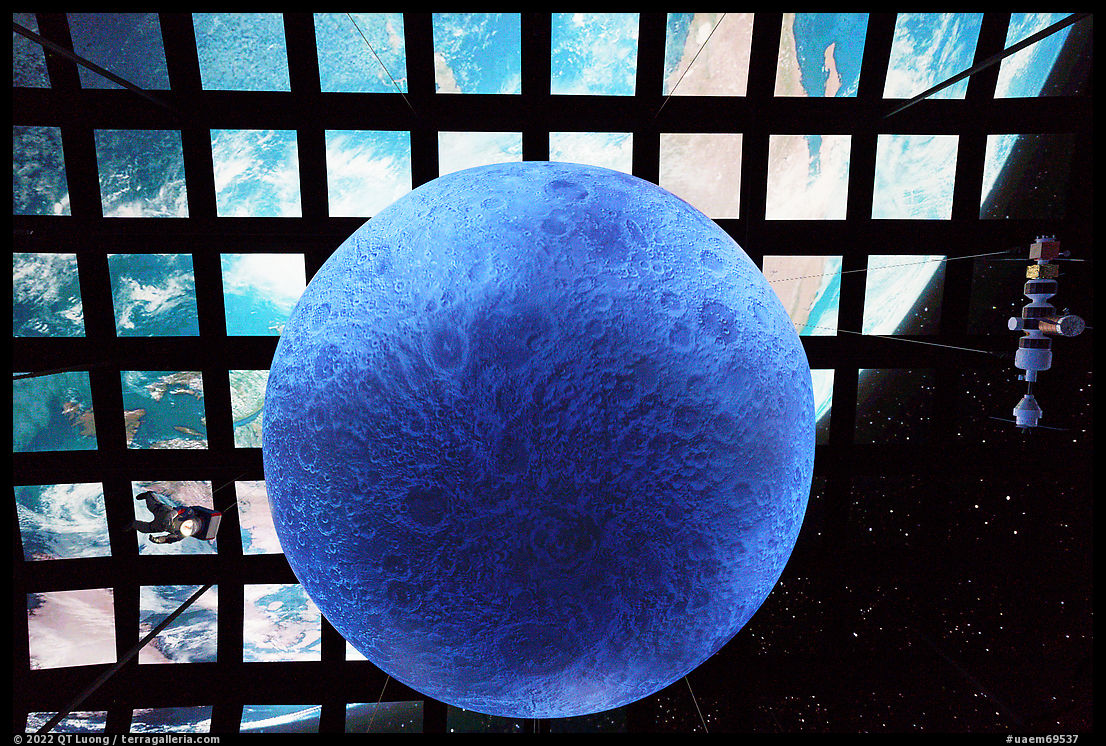
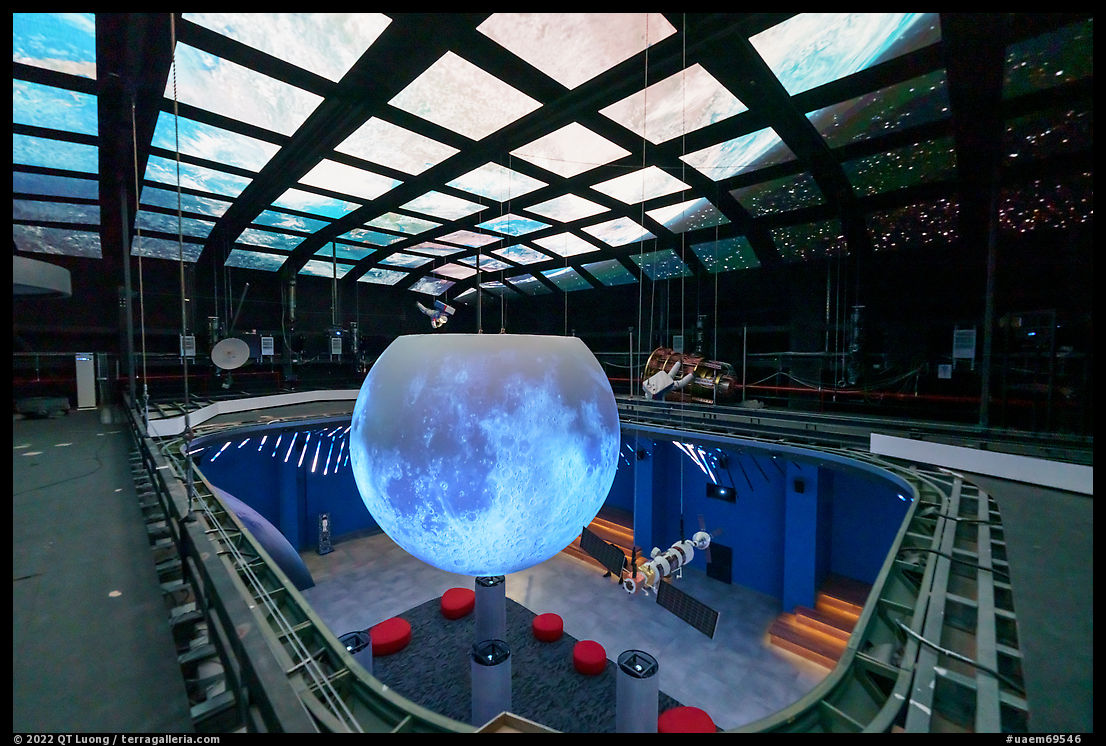
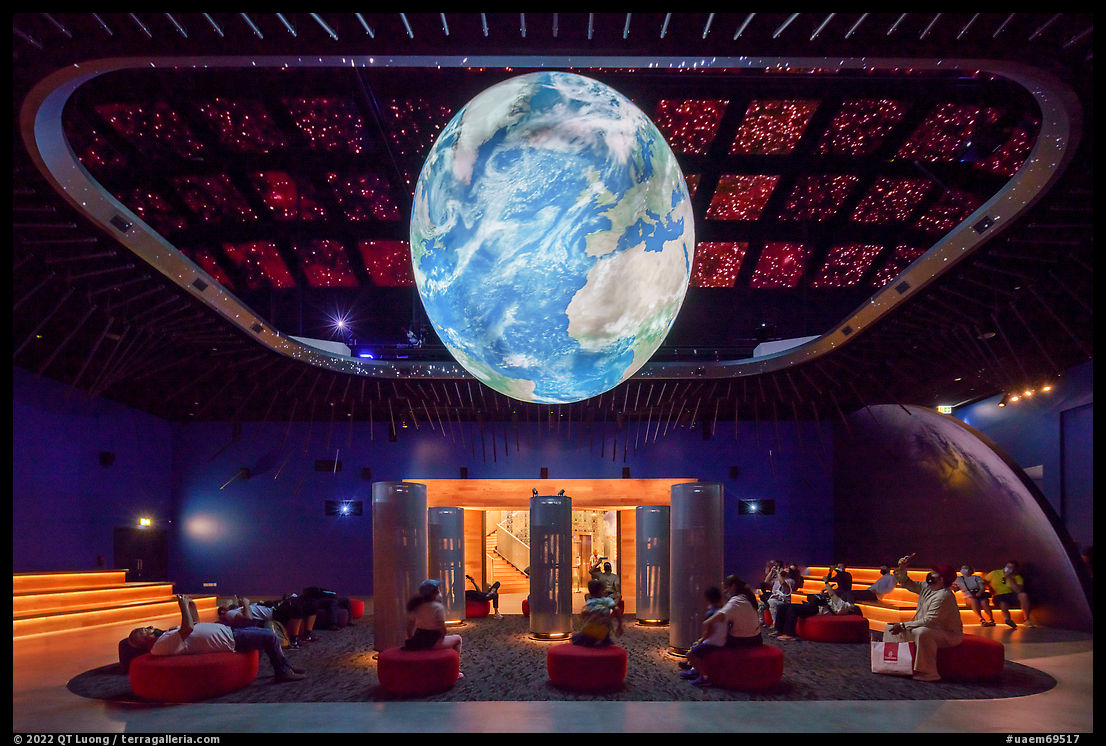
Exhibit 5: America the Beautiful
After the overload of media and technology, two-story-tall photographs immerse the visitor into the natural beauty of America’s national parks as they walk upstairs to the second floor where signs are about the National Park Service and a message from President Biden on climate change.
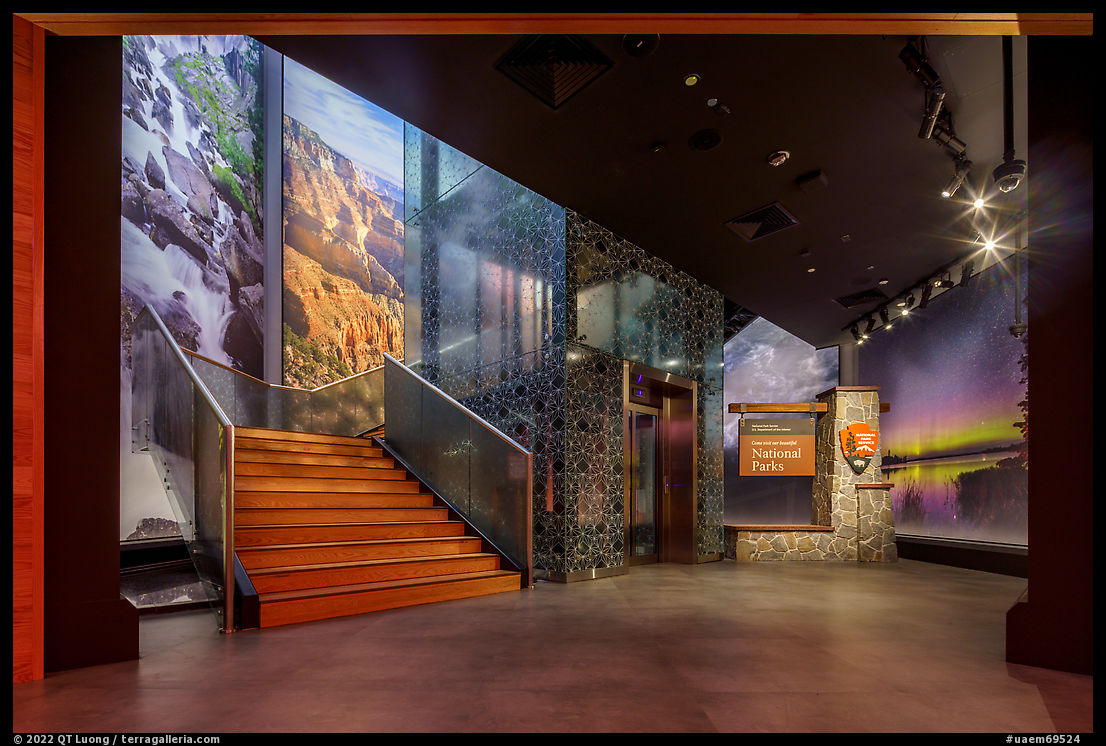
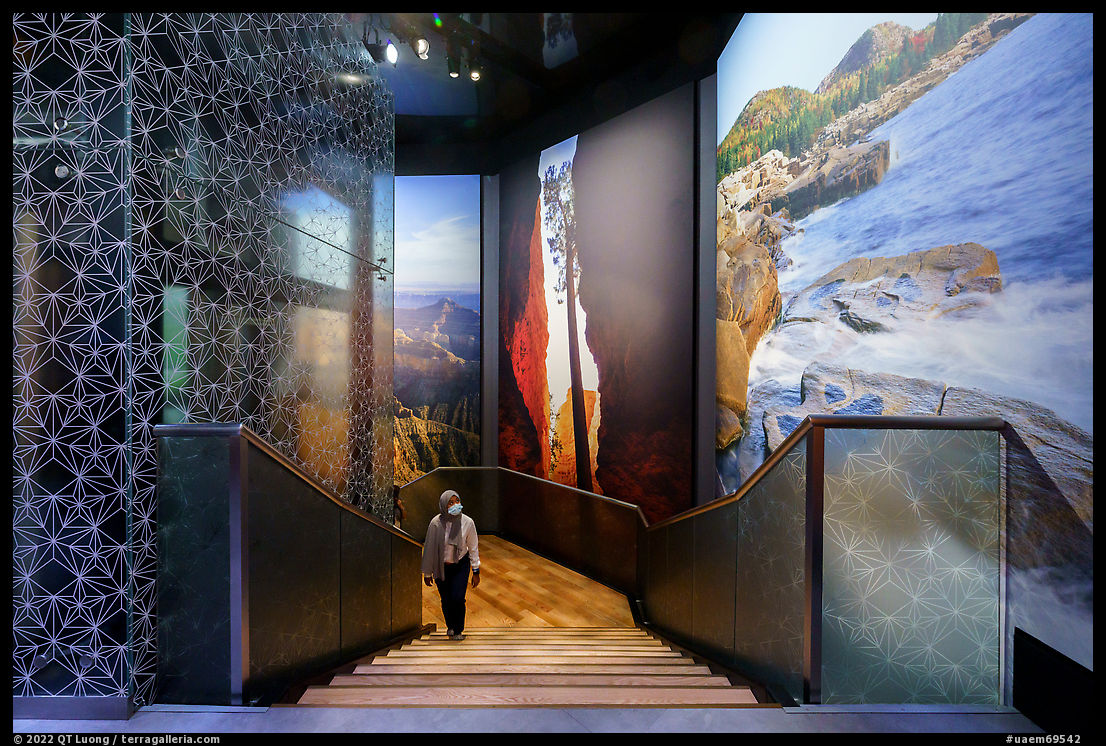
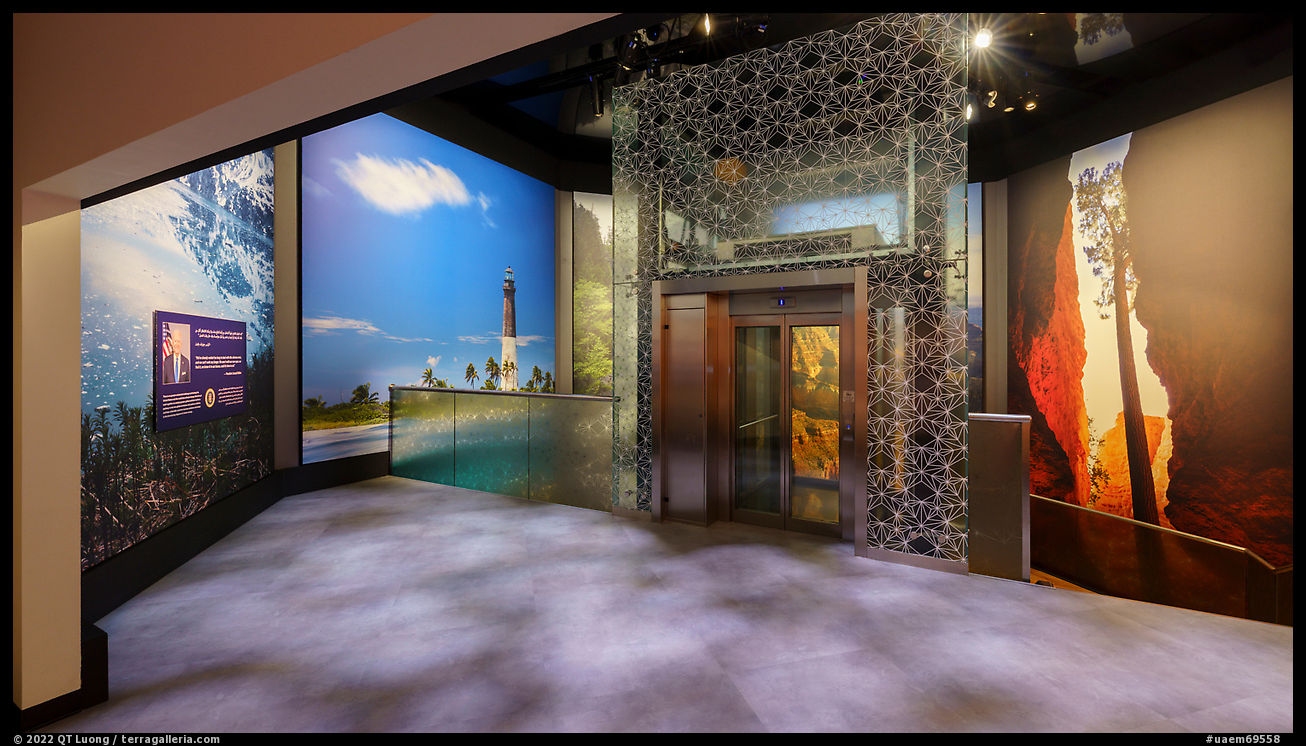
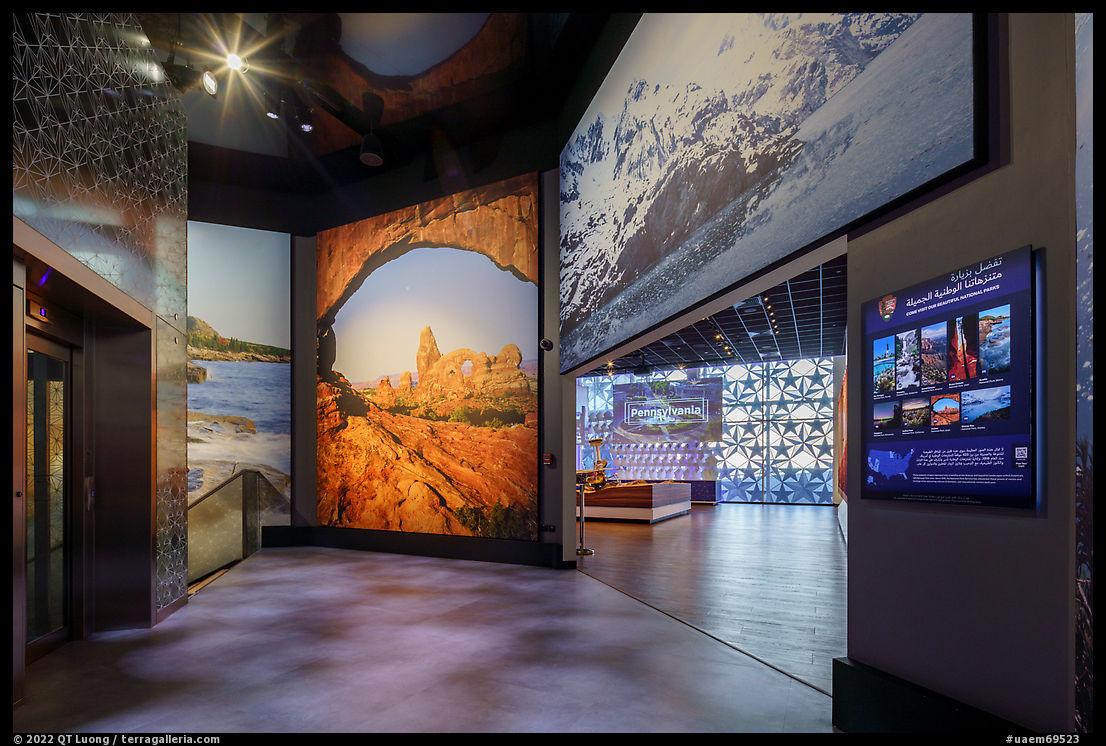
Exhibit 6: Explore
The final indoor exhibit has two faces. On one hand, the space theme continues with the Mars Opportunity Rover, a panorama it captured, and two special rocks, one collected on the moon (that visitors can touch for the first time), the other a meteorite from Mars. On the other hand, the on-screen media take visitors on a tour of the states, letting them meet people that exemplify American opportunity and inviting them to travel or study in the USA.
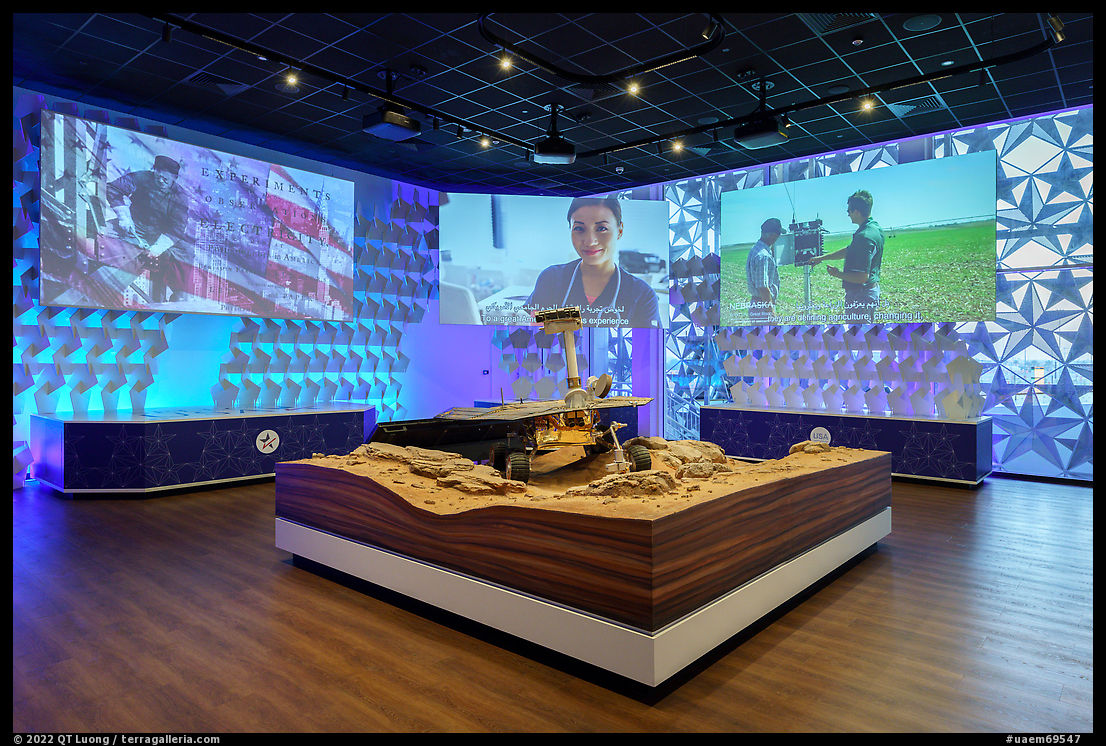
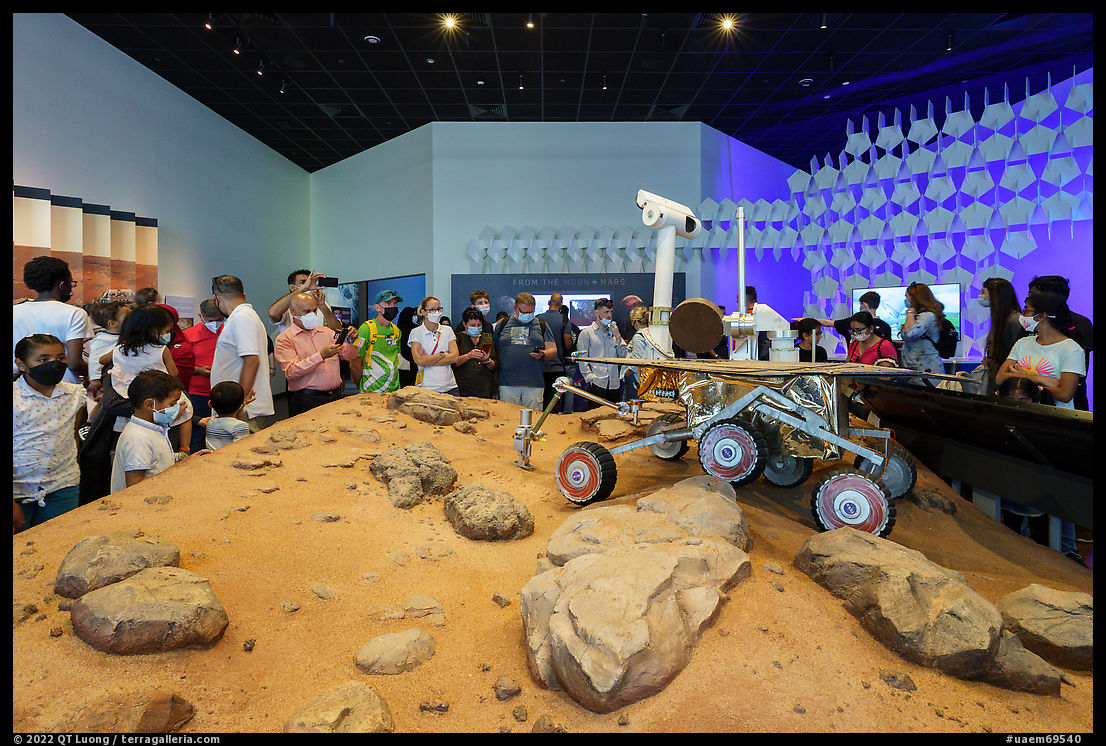
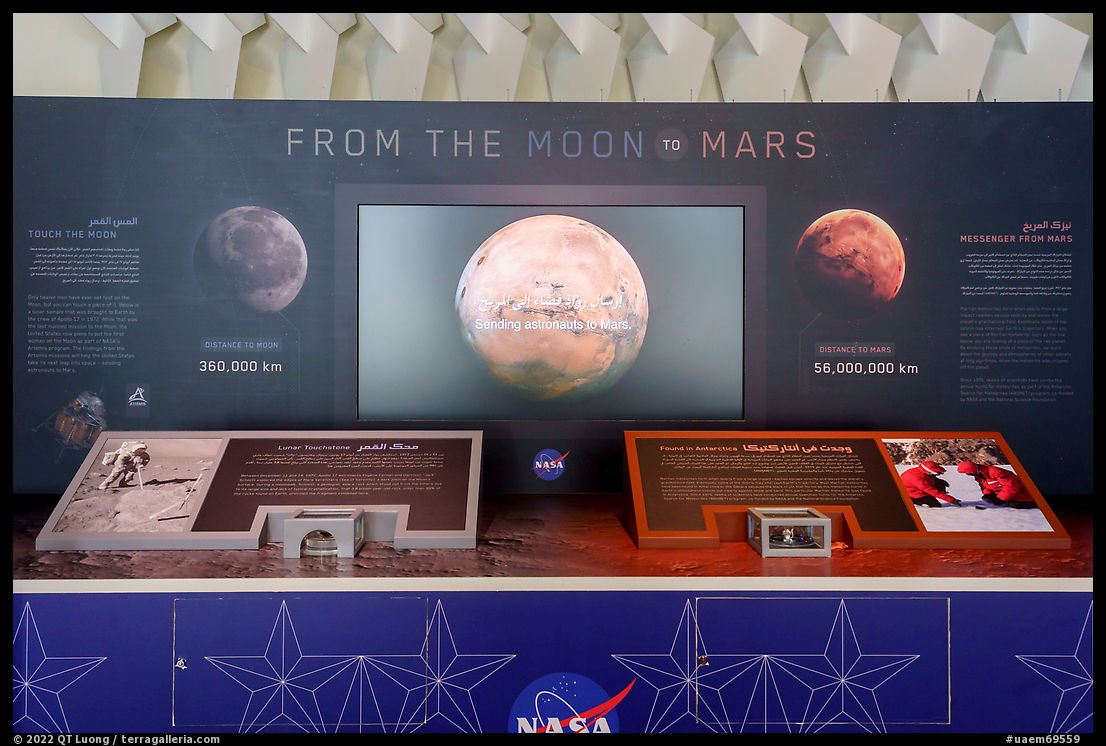
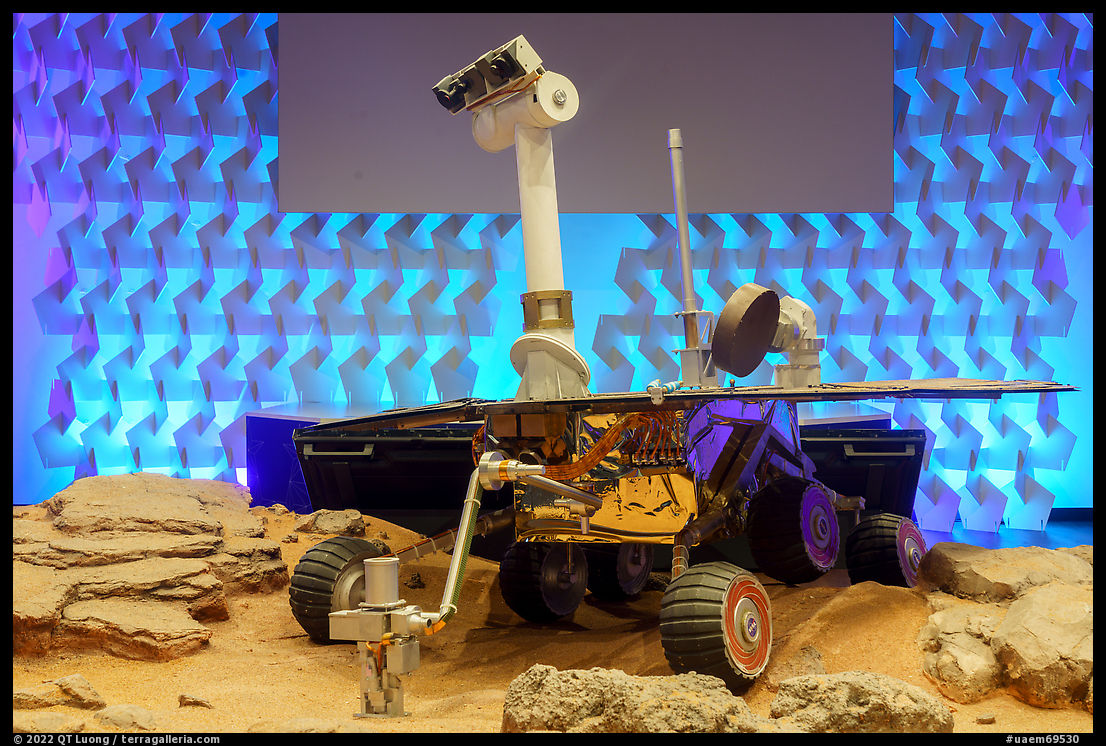
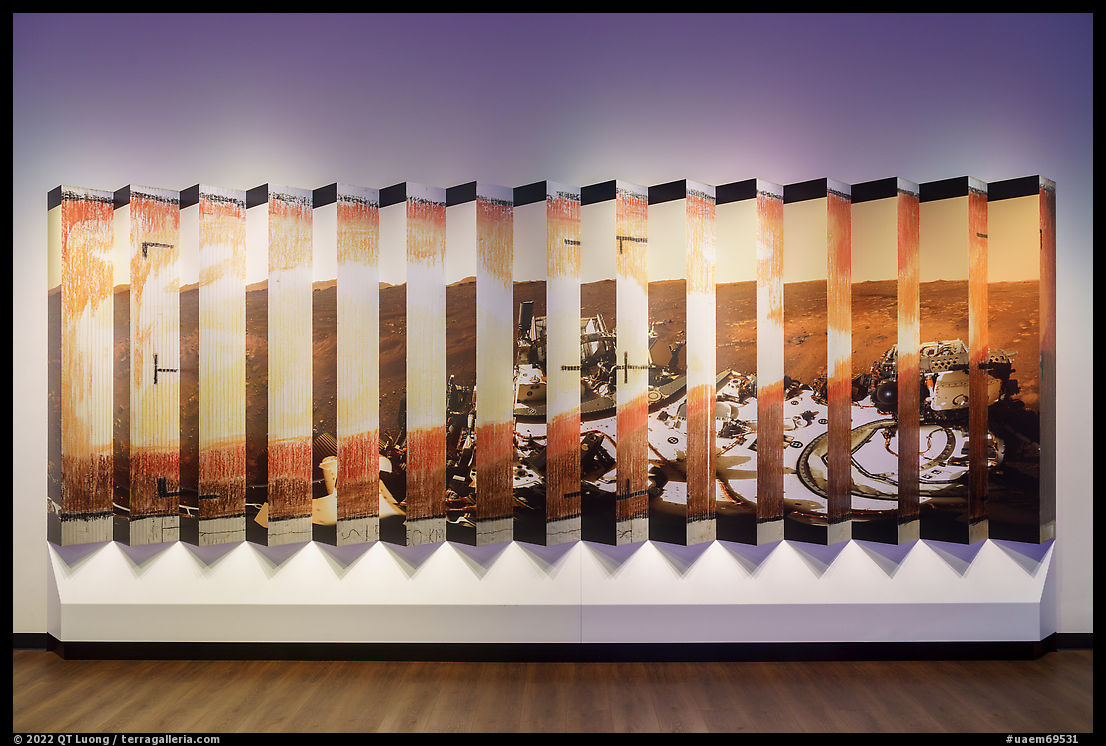
Exhibit 7/8: Lift-off
Exiting the building, as they walk down a ramp, visitors come face-to-face with a replica of the SpaceX Falcon 9 rocket booster, stationed on its landing legs. I may have missed the explanation of its significance as the first reusable orbital rocket and the most-flown in the United States. Even though, it is an impressive display, as its 137 feet (14 stories) make it the tallest structure in a national pavilion at Expo 2020 (overall second tallest) and an apt conclusion for a pavilion that heavily showcases US leadership in space exploration. Because the replica is life-size and has even a patina of soot to make it look like it’s been on a flight, I initially thought it was the real thing. At night, the rocket is a canvas for a one-minute projection telling the story of American space travel. Beneath the rocket is a patio called the Rocket Garden where visitors can dine on American fast food bought at the Rocket Dinner while enjoying performances taking place on the Rocket Stage before maybe purchasing souvenirs at the Rocket Store.
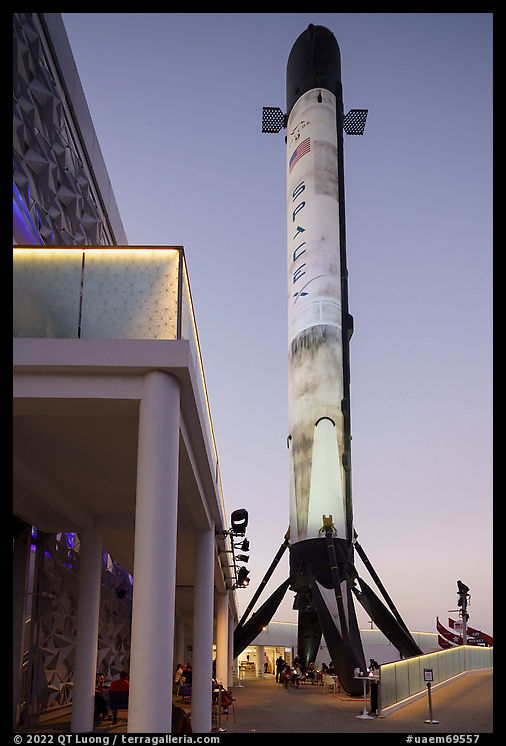
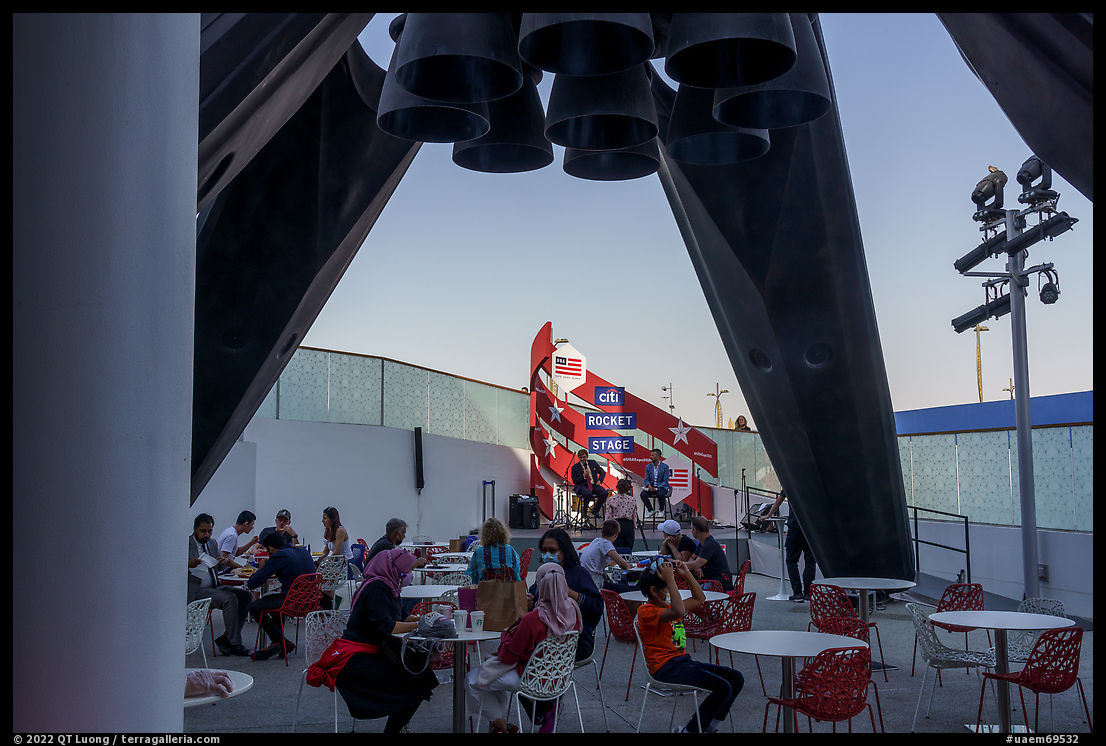
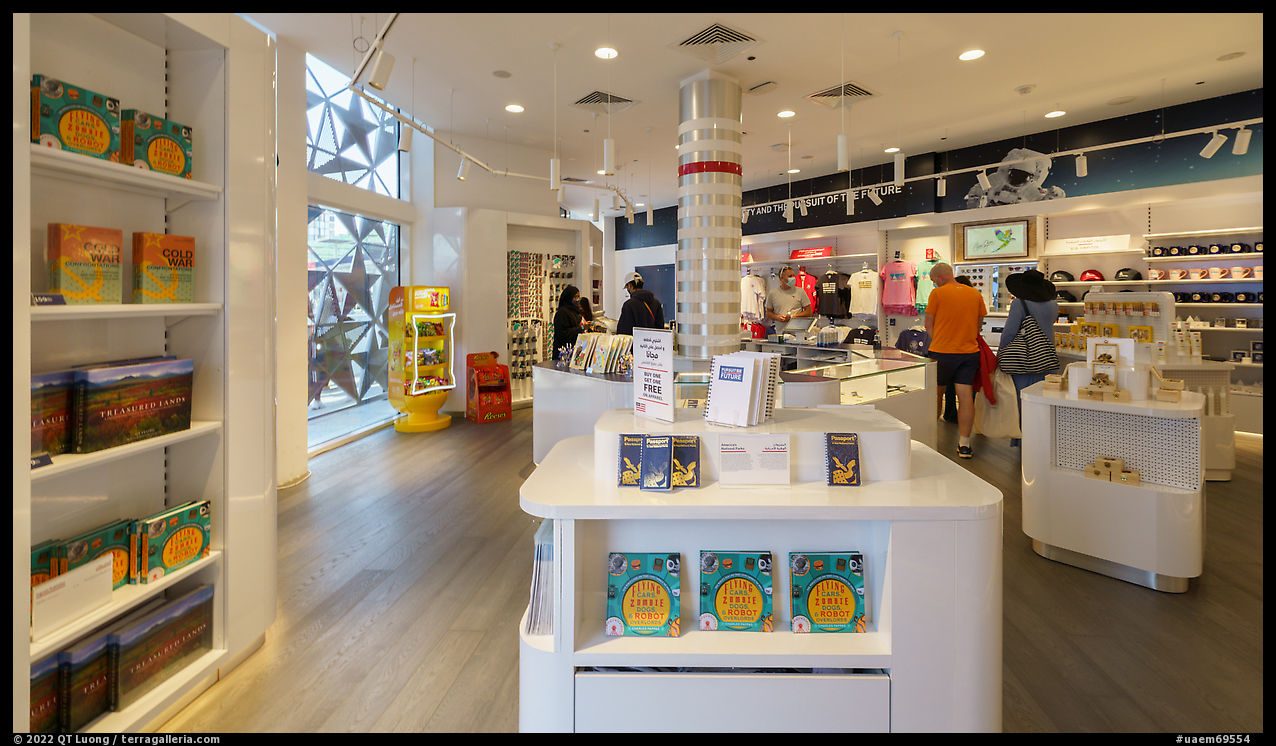
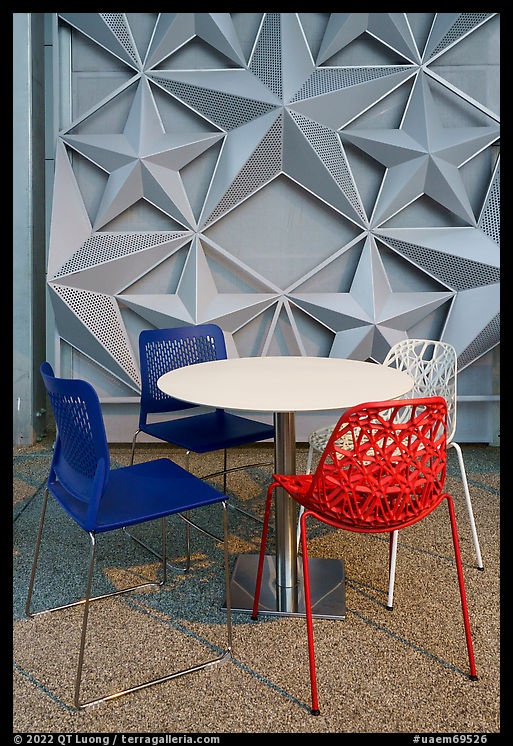
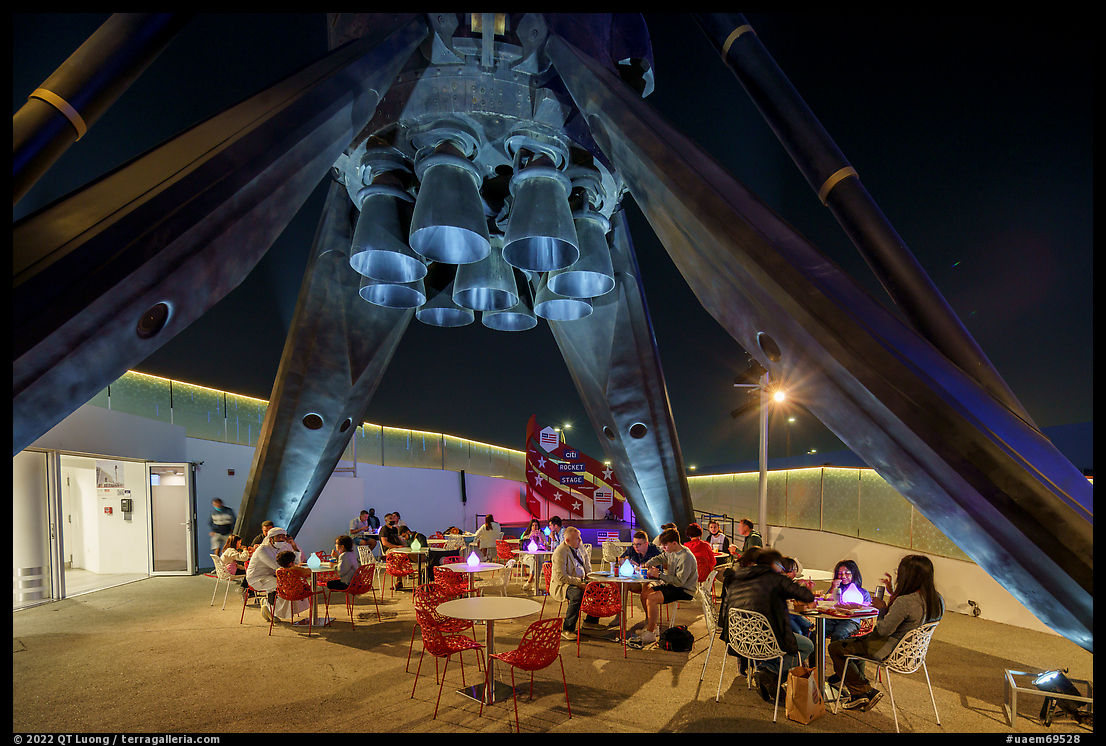
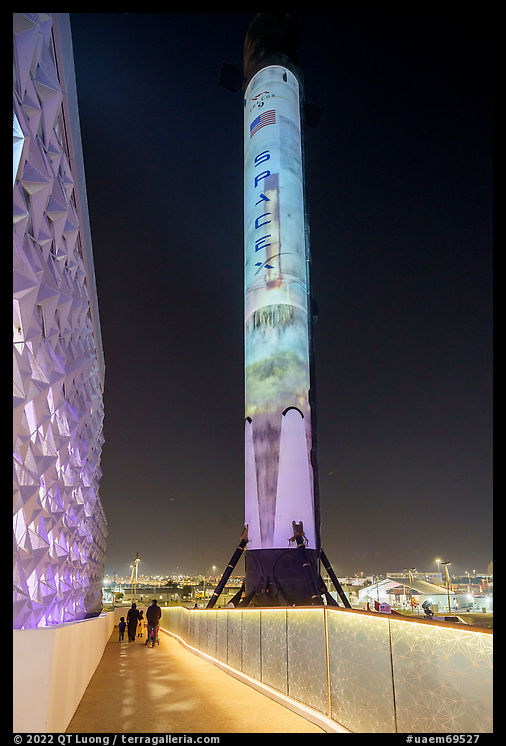
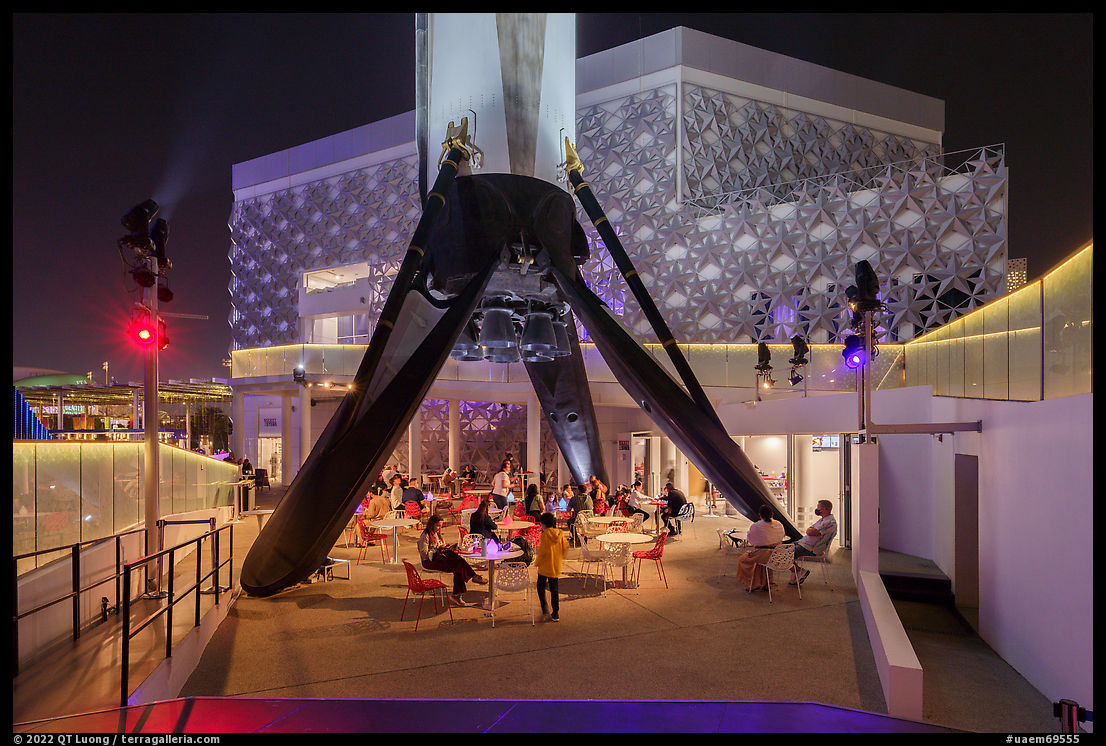
Photographing the pavilion
The observant reader may have noticed that many of the photos above are devoid of visitors. It was not for lack of popularity. Between its opening hours from 10 am to 10 pm, there was consistently a long line to get inside the pavilion, sometimes exceeding an hour – another element of expos reminiscent of theme parks.I was grateful for the opportunity to photograph the pavilion on assignment for Thinkwell Group, the firm that had designed and produced it as a turnkey solution for the US State Department (read an interview with the designers). Because they wanted from me mostly “clean” shots of the designs without people, I did most of the work before opening hours, from 6 am to 10 am. I am thankful to all the staff at the USA Pavilion for making me feel welcome and for their great job in facilitating the architectural photoshoot. They provided me full access, including to the “attic” above exhibit 4 and to private VIP areas not pictured in this article. The opening photograph was made at dawn. The night before, the staff had removed the blue queue stanchions in front of the building.
Did you notice connections between the pavilion and my work? Stay tuned for the next installment in this series.


Looks great QT. Reading between the lines here I’m sure those national park murals are your photos. Congrats!
Good guess. Thanks!